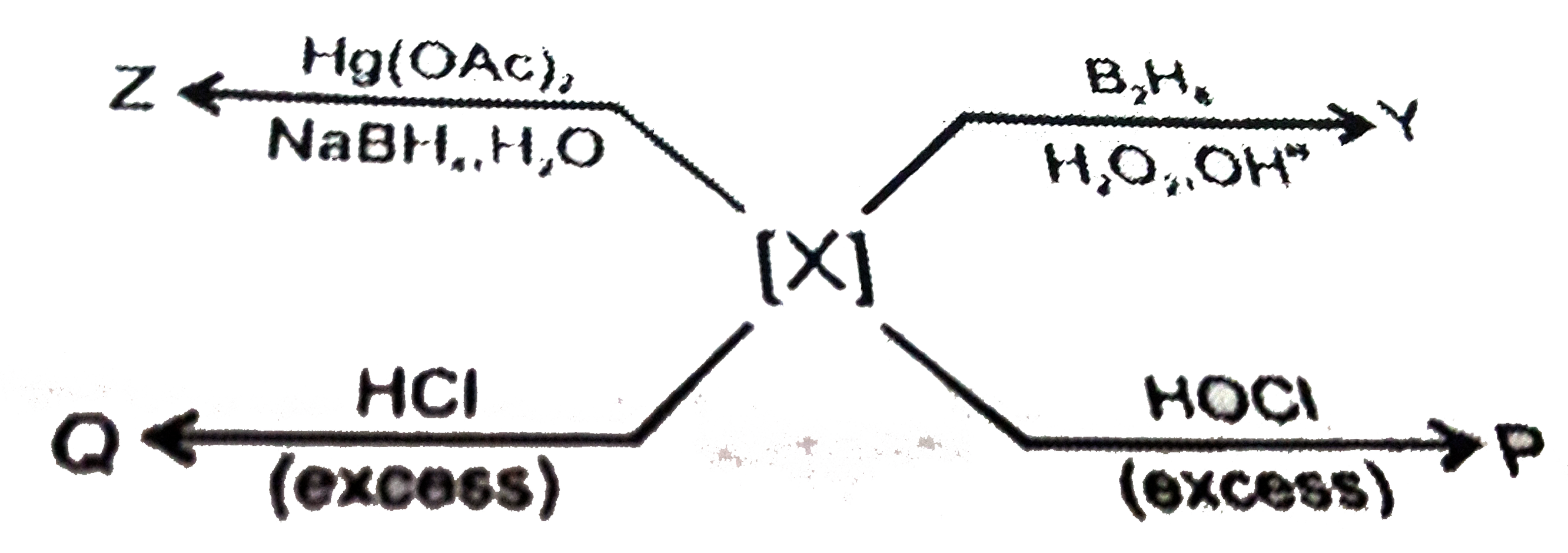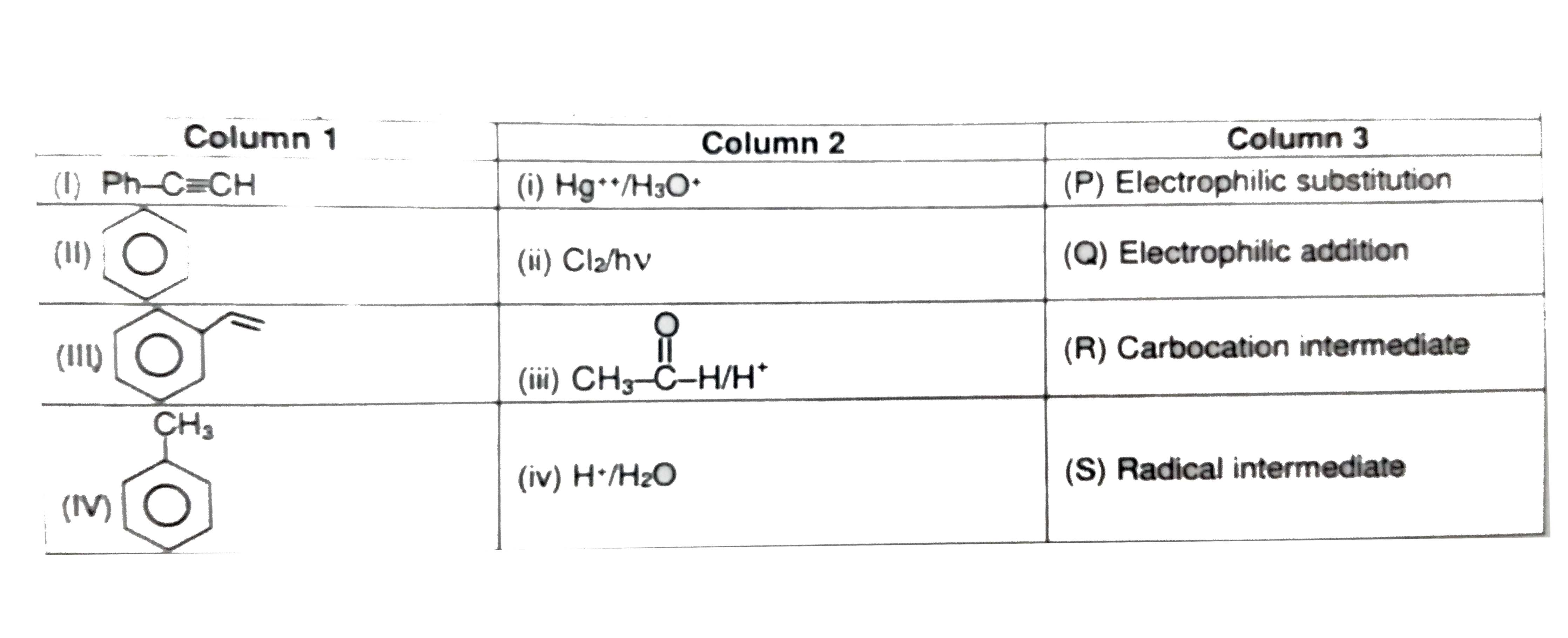Complete Solutions to Exercise-2 Part-4 of chapter ORGANIC REACTION MECHANISMS - II of Class 11 book with complete answers and questions
| Class 11 | CHEMISTRY |
| Chapter | ORGANIC REACTION MECHANISMS - II |
| RESONANCE NEW | Exercise-2 Part-4 |
| Number Of Questions | 5 |
| Academic Year | 2023-24 |
Three acyclic alkenes (x,y,z) on catalytic hyrogenation give same alkane. On reaction with HCl (x,y,z) form same major tertiary halide product.Reductive ozonolysis of mixture of (x,y,z) gives a mixture of two moles of `CH_2=O` one moles of `CH_3CH=O` one mole of acetone, one mole of butanone and one mole of 2-methyl propanal, x,y and z do not have any stereoisomers.
(x,y,z)`overset(H_3O^(**))to` addition product . The correct statement is
View SolutionA Hydrocarbon X (M.F.`C_4H_6`) produces an aldehyde Y through Hydroboration Oxidation and a ketone Z through Oxymercuration Demercuration. Y and Z are functional isomers. X gives P when treated with excess of HOCl and Q when treated with excess of HCl.

The correct statement is :
View SolutionA Hydrocarbon X (M.F.`C_4H_6`) produces an aldehyde Y through Hydroboration Oxidation and a ketone Z through Oxymercuration Demercuration. Y and Z are functional isomers. X gives P when treated with excess of HOCl and Q when treated with excess of HCl.

The correct statement is :
View Solution
Ketone is formed by the reaction
View Solution
Which of the following is non-correct for substitution reaction.
View Solution
Exercise-2 Part-4 questions and complete solutions for chapter ORGANIC REACTION MECHANISMS - II of RESONANCE ENGLISH of Class 11